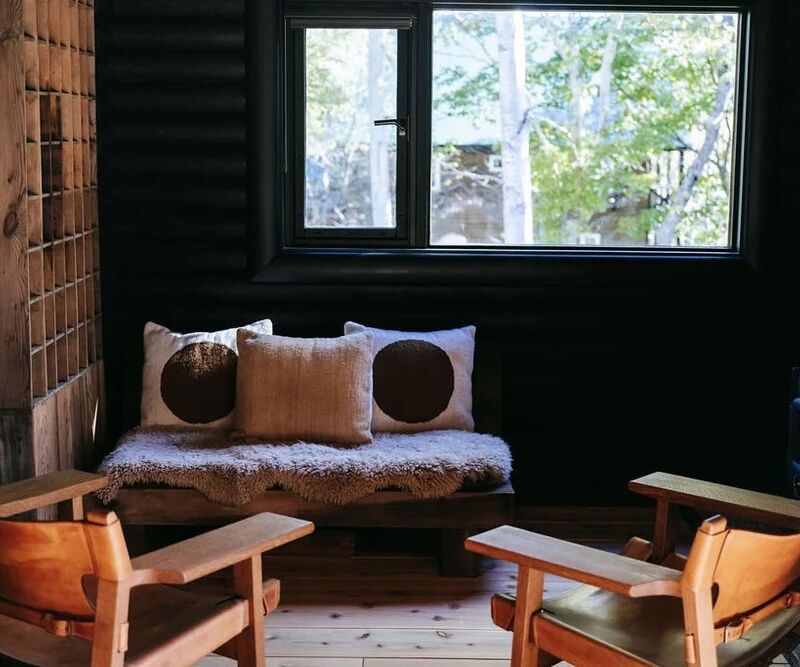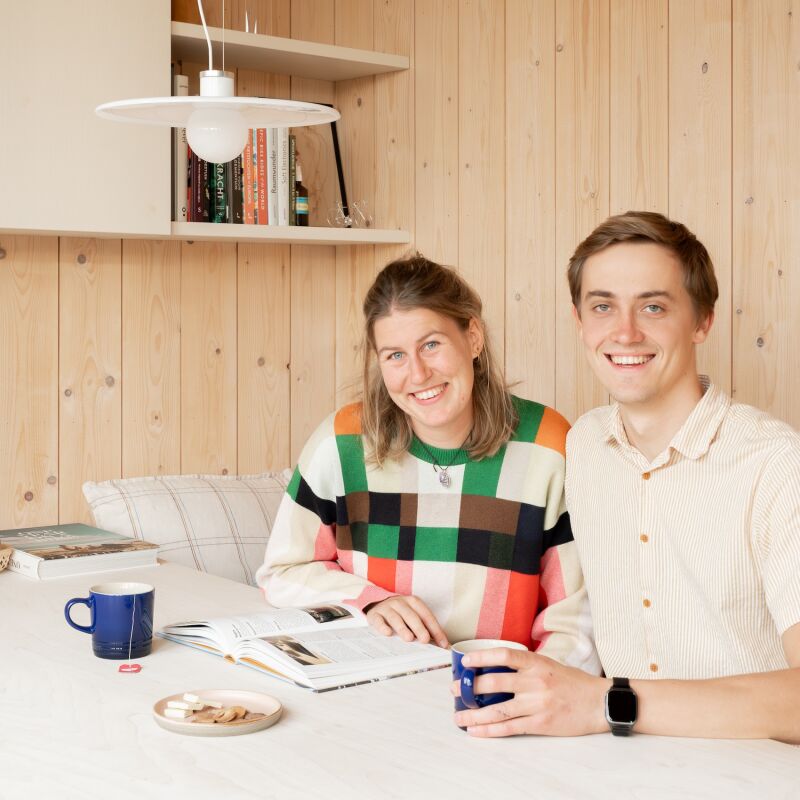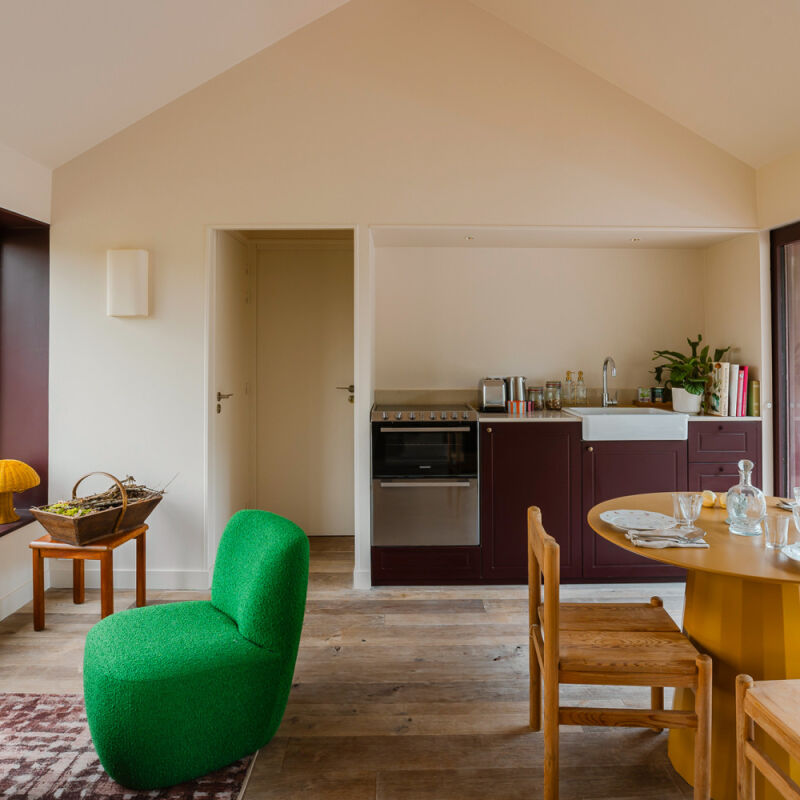Two tiny cabins owned by two friends in New Zealand offer an important reminder: a retreat need not be massive to offer a peaceful hideaway.
Designed by firm principal Nat Cheshire of Aukland-based Cheshire Architects, the cabins are two projects for two clients: friends who pooled their money to buy a plot of land on a moody, remote estuary in northern New Zealand. They built their own shed cabin atop it, and took turns sharing it before deciding that two tiny, but very special, homes would better suit their needs.
The result is a pair of structures full of dichotomies: They have small footprints but stick out jarringly from the landscape. They’re basic plywood buildings, but with luxurious details inside. And one is black, the other light.
Photography by Jeremy Toth, courtesy of Cheshire Architects, except where noted; with quotes as told to New Zealand’s Home Magazine,




Ostentatious second homes were not in the budget for this project but weren’t wanted, anyway. The petite cabins were created in part as a reaction to overly large, little-used vacation houses. “Holiday homes have become this country’s decadence,” says Cheshire. “We wanted a different vision for New Zealand’s coastal future.”
The cabins are entirely off the grid, and each has a bathroom, kitchen, living room, lofted sleeping space, and outdoor shower. For ventilation, wood hatches open in the bathroom and sleeping lofts.

The estuary-side plot was zoned for a single 1,500-square-meter (16,145-square-foot) house. Since this plan called for two separate dwellings–albeit at 29 square meters (312 square feet) each–Cheshire and his clients had to argue their case for special permission to build. In total, the two cabins required just over eight sheets of plywood.









N.B.: This story is one from the archives; it originally ran on October 9, 2015, and has been updated with new images.
More dream cabins await:
- A Kiwi Beach Compound, Cross-Cultural Edition
- An Indestructible Cabin on Stilts
- Outbuilding of the Week: Tiny Glass Houses on Dry Creek
- Steal This Look: Island Cabin Kitchen
Frequently asked questions
What are the tiny cabins featured in this article?
The tiny cabins featured in this article are part of a project called Freunde von Freunden x Vitra. Created by Freunde von Freunden, a magazine that explores the homes and workspaces of creative individuals around the world, the project seeks to create a series of tiny cabins that are both functional and aesthetically pleasing.
What is the design inspiration for the cabins?
The design inspiration for the cabins comes from the traditional alpine huts that are found in the region. The cabins are designed to be small and cozy, with simple and functional features that make the most of the limited space. The use of natural materials and a minimalistic color palette also adds to the overall aesthetic of the cabins.
What are some of the features of the cabins?
The cabins are designed to be functional and comfortable despite their small size. Some of the features include built-in storage, a fold-down table, a bench that doubles as a sleeping platform, and large windows that let in plenty of natural light. The cabins are also designed to be portable, so they can be moved to different locations if necessary.
What are some of the design differences between the light and dark cabins?
The light and dark cabins have similar designs, but there are some differences in the materials used and the overall aesthetic. The dark cabins have black-stained cladding on the exterior, while the light cabins have natural wood cladding. The dark cabins also have black-painted interiors, while the light cabins have white-painted interiors. The overall effect is that the dark cabins have a more stark and minimalist look, while the light cabins feel warmer and more welcoming.
Are the cabins suitable for year-round living?
The cabins are designed to be used as temporary dwellings, so they are not intended for year-round living. However, they are well-insulated and can be heated, so they are suitable for use in colder climates. The cabins are also designed to be easily transportable, so they could be used as a weekend getaway or a summer home.




Have a Question or Comment About This Post?
Join the conversation